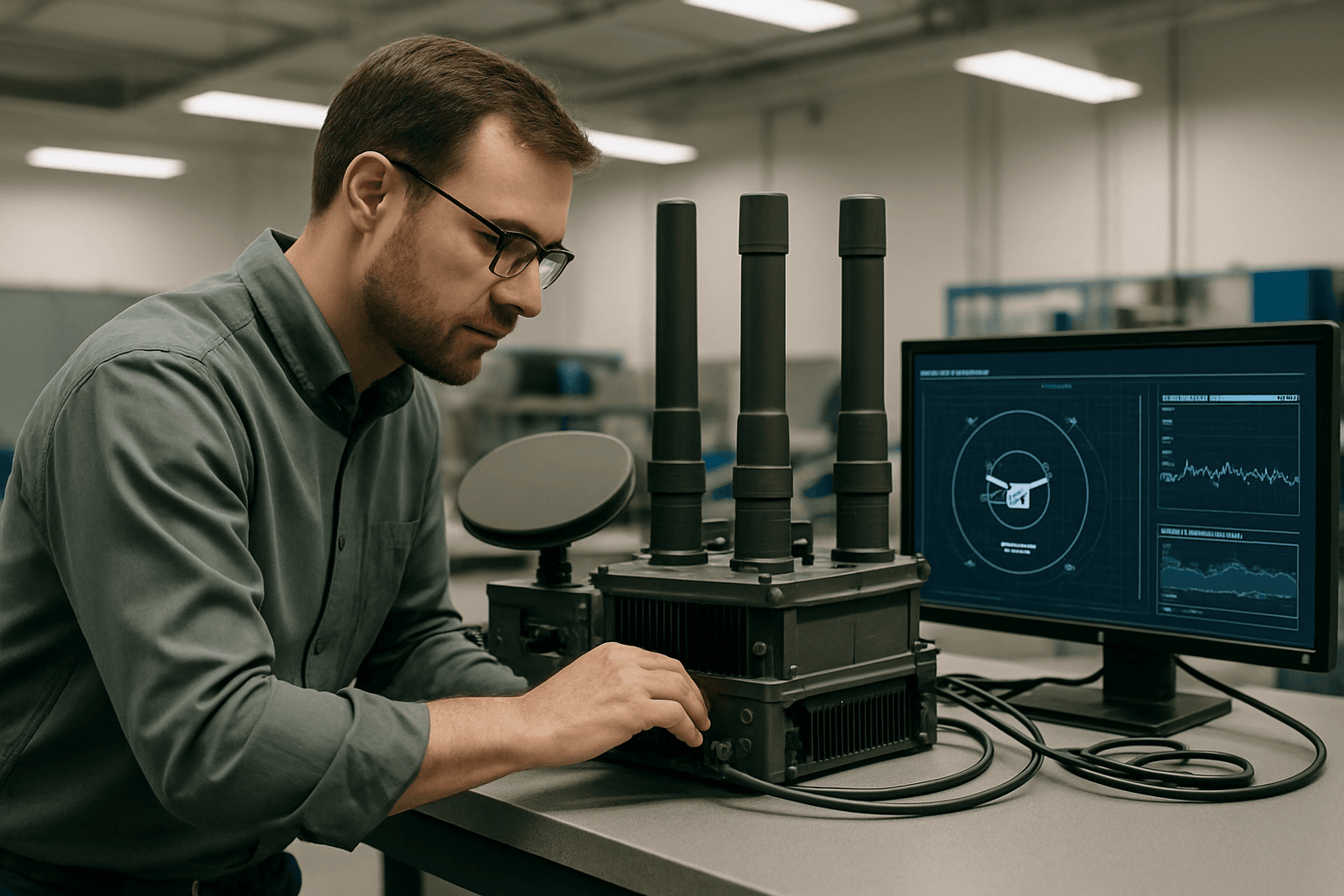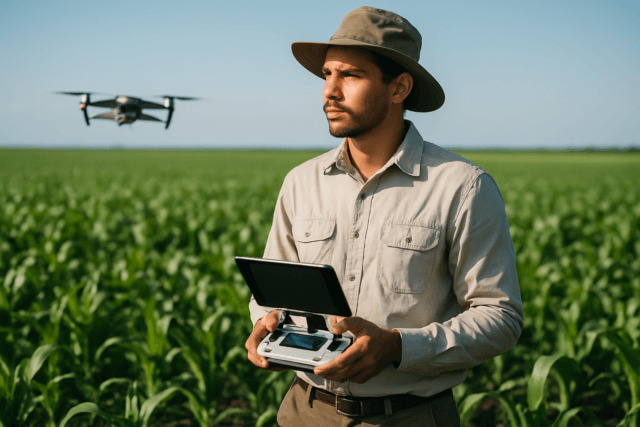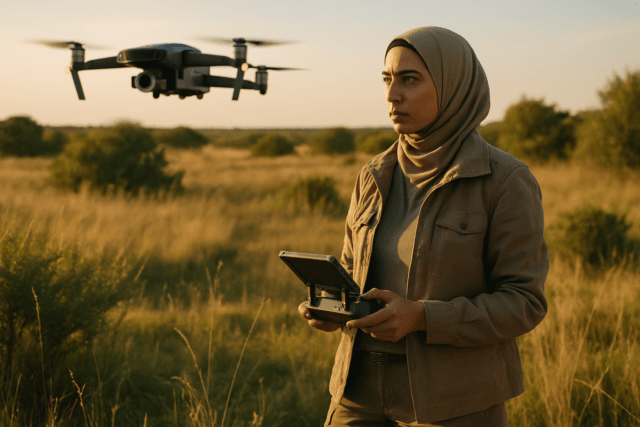The rise of readily available drone technology has brought about complex security challenges, necessitating advanced counter-Unmanned Aircraft Systems (C-UAS) solutions. DZYNE Technologies, led by CEO Matthew McCue, is at the forefront of developing intelligent defense mechanisms against rapidly evolving asymmetric threats. This article delves into the innovative approaches and technologies employed by DZYNE and the broader counter-drone industry to safeguard critical infrastructure and address modern security concerns.
Understanding the Counter-Drone Landscape
Counter-drone technology encompasses a wide range of solutions designed to detect, classify, and mitigate drones and unmanned aerial vehicles (UAVs). These systems, also known as counter-UAS technology, integrate various components, from detection sensors to mitigation tools, to provide comprehensive protection against unauthorized drone activity.
Detection and Monitoring Equipment
Effective counter-drone strategies begin with robust detection and monitoring capabilities. Key technologies in this area include:
- Radar: Radar systems use radio energy to detect objects, measuring their direction and distance. Specialized counter-UAS radar can track smaller objects like drones with high accuracy, even at long ranges.
- Radio Frequency (RF) Analyzers: RF analyzers identify drones by analyzing their communication signals. They are effective in detecting unauthorized drones, even in crowded urban environments.
- Optical Sensors (Cameras): Cameras provide visual confirmation of drone presence and can be integrated with AI to identify specific drone models.
- Acoustic Sensors (Microphones): Acoustic sensors detect the sound of drones, providing an additional layer of detection.
Mitigation and Countermeasures
Once a drone is detected and classified as a threat, various countermeasures can be deployed to neutralize it:
- Radio Frequency Jammers: These devices disrupt the communication between the drone and its operator, causing the drone to lose control or return to its starting point.
- GPS Spoofers: GPS spoofers send false GPS signals to the drone, causing it to navigate incorrectly or land in a designated safe zone.
- High Power Microwave (HPM) Devices: HPM devices emit high-energy pulses that can disrupt or damage the electronic systems of a drone.
- Nets and Net Guns: These systems physically capture drones, either by launching a net to entangle the drone or by using a net gun to shoot a net at the drone.
- Laser-Based Neutralization: Laser systems use high-intensity laser beams to disable drones, offering precision and minimal collateral damage.
- Cyber Takeover Systems: Cyber takeover systems hack into a drone’s system, allowing operators to take control and redirect it to a safe location.
DZYNE Technologies: Pioneering Counter-Drone Solutions
DZYNE Technologies, founded in 2012, offers advanced counter-drone solutions designed to deliver intelligent defense against rapidly evolving asymmetric threats. Their flagship product, the Dronebuster®, is utilized in many countries and has gained recognition as a trusted and operationally proven defense solution.
Dronebuster®: A Versatile Counter-Drone System
The Dronebuster® is a handheld counter-drone system designed to detect, track, identify, and mitigate drone threats. It is available in various configurations, including fixed site, mobile, and wearable options, allowing users to implement a layered defense solution.
- Dronebuster® 4-EU: This upgraded variant is specifically engineered to operate within European short-range device frequency bands, addressing the need for region-specific counter-drone solutions. It also incorporates an optional PNT (Position, Navigation, and Timing) attack mode to neutralize satellite-controlled drones.
- Dronebuster® DTIM Kit: This wearable kit enhances the Dronebuster® system by incorporating a detection and identification feature, providing soldiers with real-time situational awareness and protection against hostile drones. It can detect drones up to 7 km away across a broad spectrum.
Key Features of DZYNE’s Counter-Drone Technology
- PNT Attack Mode: This unique feature neutralizes satellite-controlled drones by attacking their navigation systems, offering a more effective solution than traditional “brute force” jamming.
- Layered Defense Strategy: DZYNE emphasizes a layered defense strategy, combining various detection and mitigation technologies to address a wide range of drone threats.
- Adaptability: DZYNE’s solutions are designed to be adaptable to different environments and mission requirements, making them suitable for protecting critical infrastructure, military bases, borders, and high-threat environments.
Innovations in Counter-Drone Technology
The counter-drone industry is constantly evolving, with new technologies and approaches emerging to address the growing complexity of drone threats. Some key innovations include:
AI-Powered Drone Detection
Artificial intelligence (AI) and machine learning are playing a pivotal role in enhancing drone detection capabilities. AI-powered systems can analyze vast amounts of data in real-time, improving their ability to detect and respond to threats. They can also learn from past incidents, enhancing their accuracy and effectiveness over time.
Laser-Based Drone Neutralization
Laser-based anti-drone systems are gaining traction as a precise and cost-effective solution for neutralizing threats. These systems use high-energy lasers to disable or destroy drones, minimizing collateral damage.
Command and Control (C2) Systems
Effective counter-drone operations require seamless command and control integration. C2 systems unify disparate defense assets into a single, cohesive system, synchronizing radar data, electro-optical inputs, and electronic warfare capabilities to automate threat analysis and response.
GPS Spoofing Countermeasures
GPS spoofing countermeasures are becoming increasingly sophisticated, enabling friendly UAVs to function uninterrupted while defeating GPS jamming attempts by hostile forces.
Applications of Counter-Drone Technology
Counter-drone technology is being deployed in a wide range of applications to protect against potential security breaches and damage:
- Critical Infrastructure Protection: Counter-drone systems are used to protect airports, power plants, water treatment facilities, and other critical infrastructure from drone-related threats.
- Military and Defense: Military forces use counter-drone technology to protect bases, troops, and sensitive equipment from enemy drones.
- Border Security: Counter-drone systems are used to monitor borders and prevent smuggling and other illicit activities.
- Event Security: Counter-drone technology is deployed at large public events to prevent drone-based attacks or disruptions.
- Aviation and Maritime Security: Airports and seaports use counter-drone systems to prevent drones from interfering with aircraft or ships.
- Prison Security: Prisons are using counter-drone technology to prevent drones from delivering contraband to inmates.
Challenges and Future Trends
Despite the advancements in counter-drone technology, several challenges remain:
- High Costs: Counter-drone systems can be expensive to purchase and maintain, which can be a barrier for some organizations.
- Rapid Technological Advancements: Drones are constantly evolving, making it challenging for counter-drone systems to keep pace.
- Legal and Ethical Concerns: The use of counter-drone technology raises legal and ethical concerns, particularly regarding privacy and safety.
Looking ahead, the counter-drone market is expected to continue to grow, driven by the increasing use of drones and the growing awareness of the threats they pose. Future trends in the industry include:
- Increased use of AI and machine learning: AI and machine learning will play an even greater role in enhancing drone detection and mitigation capabilities.
- Development of more sophisticated countermeasures: New countermeasures, such as directed energy weapons and cyber takeover systems, will be developed to address the evolving drone threat.
- Integration of counter-drone systems with other security systems: Counter-drone systems will be increasingly integrated with other security systems, such as access control and video surveillance, to provide a more comprehensive security solution.
Conclusion
The counter-drone industry is rapidly evolving to address the growing threat posed by unauthorized drone activity. Companies like DZYNE Technologies, under the leadership of Matthew McCue, are pioneering innovative solutions to detect, track, and mitigate drone threats, safeguarding critical infrastructure and protecting against modern security challenges. As drone technology continues to advance, the development and deployment of effective counter-drone systems will remain a critical priority for governments, defense agencies, and private organizations worldwide.





